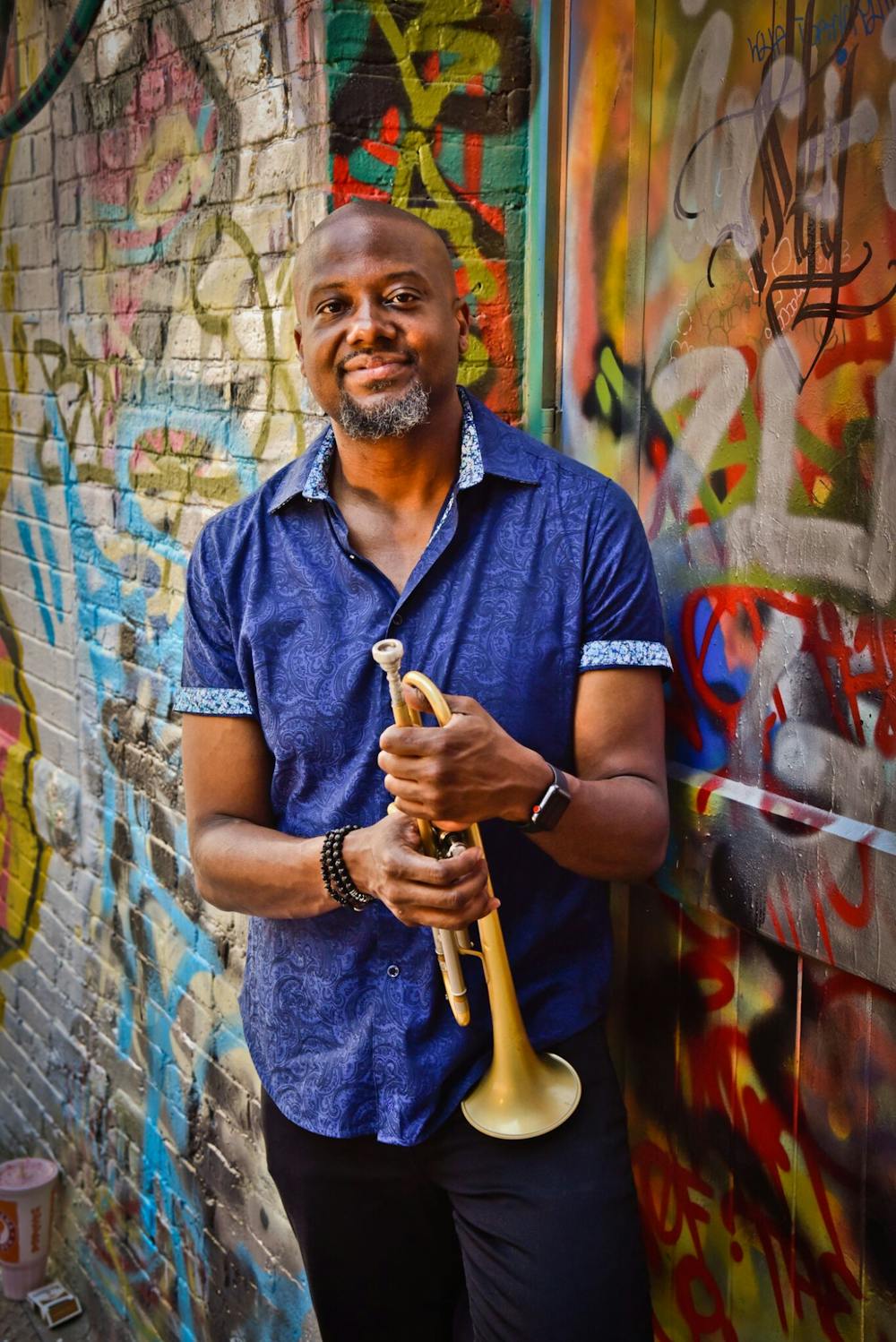When I imagine the types of people who listen to jazz today, I think of elderly men and women sipping glasses of red wine and doing fancy things, like attending galas and wearing strings of pearls.
But back in the day, when jazz was pop, it was the music of youth! It was the music of talking back to your parents, staying out too late, being cool, having sex with people you barely knew and generally being young and wild. It shook its hips and swung between virtuosity and depravity. The Peabody Jazz Ensemble brought that young vitality into the music, live and free, in their concert on the evening of Oct. 27.
The Peabody Jazz Ensemble is a student group at the Peabody Institute led by renowned trumpeter Sean Jones and according to their website, “grounds its students in the remarkable history of jazz, while emphasizing the exploration of all American music.” In the performance, they performed tunes by jazz greats like Thad Jones, Dizzy Gillespie, Quincy Jones and Joe Henderson, along with a contemporary piece written by Peabody faculty member Javier Nero.
The musicians came on the stage, Jones snapped out the beat, and then stepped back and simply let the band do their thing. The concert started with “The Deacon,” arranged by Thad Jones in 1973 and popularized by the Count Basie Orchestra. As always, Peabody students are amazing. The tune began with a sweet piano intro that led into an ambling, swinging beat. Though it’s from the 1970s, it had an old New York sound that I could easily imagine hearing from a classic big band on the stage of a Harlem night club.
The tune had an easy, walking pace that made it a great way to ease into the music that night. The piano gently ambled along in the back, going on its own little journey, the bass and drum laid down a solid foundation and the horns stunned with big hits and swells of sound.
At some point, the audience started clapping along, accompanied by some slight cringing and awkward smiles from the musicians, but it goes to show just how catchy it was. At the end, Jones named the soloists and warmly welcomed the audience to the show. He then warned that the Thad Jones tune “was just an appetizer” for the rest of the show and that we were in for a rollercoaster ride. Man, was he right!
Their next tune, “Things to Come” from Dizzy Gillespie, arranged by Gil Fuller, moved at a frantic pace. The band crashed into a wonderful explosion of sound to start the piece off. At some point, I started absently wondering if it was possible for drum kits to catch on fire. It had an incredible whirlwind of chaotic energy but still felt very forward driven and controlled. It also had a few sudden moments of tenderness, giving the audience a brief rest, before go, go, going again!
In the concert, there was also a focus on tunes composed in the 1990s by Joe Henderson. They played “Isotope,” “Without a Song,” “Punjab” and “A Shade of Jade.” Jones described Henderson as being part of the Hard Bop genre. I’d never heard of Hard Bop before, being only familiar with the uncontrolled wild virtuosity and nebulous runs of Bebop, so I was expecting something completely experimental and unlistenable.
What I got instead was something that I loved. It had the free expression and unhindered melodic lines of Bebop, but there was also a mellowness and tenderness to the music that grounded it in something that I could see myself enjoying casually. The tune “Without a Song” featured masters student Andrew Kreitner, who gave a smooth and thoughtfully played solo that paired wonderfully with the wilder sound of the band backing him up.
The penultimate tune in the concert, and my favorite of the night, was “Kemet” by Javier Nero, one of the new faculty at the Peabody Institute. From the first beat, I could tell that this piece was going to be different. It opened on a clapped rhythm that created an interesting change in texture, as well as bringing to mind a distinctly folksy sound. This was then layered with other sections of the band until the entire space rang with warm sounds.
Longer, thoughtful solos and protracted harmonies from the horns made this tune sing more than the previous ones that night. This tune played around with rhythm changes a bit more than the other pieces, but I could still hear the historical influences present. The way that the program was set up, touching on pieces from jazz history and then culminating in a modern jazz tune, almost served to educate the audience on how to listen to each successive piece of music.
It almost goes without saying that the Peabody students were fantastic. For many of the pieces, Jones didn’t even need to be conducting, he just needed to give a few cues and the ensemble could handle the rest from there.
In every piece, there were solo opportunities for the musicians to show off their individual virtuosity. Though a portion of the solos had some of the student-like timidness, carefully rounding out each note, I could hear the individual character of each musician beginning to come through. It wasn’t just runs and blues scales, there were real ideas that the soloists created and came back to. The rest of the band was supportive through each solo — nodding their heads along, smiling at particularly playful and surprising turns and giving a bit of “stank face” at moments where the soloist was really getting into it.
I had a blast at the concert. Granted, I had a slight headache at the end from the powerful volume they were putting out, but I felt both soothed and energized by the incredible music I’d heard. The Peabody Jazz Ensemble truly outdid themselves, and I’ll definitely be coming back to hear their next performance.





